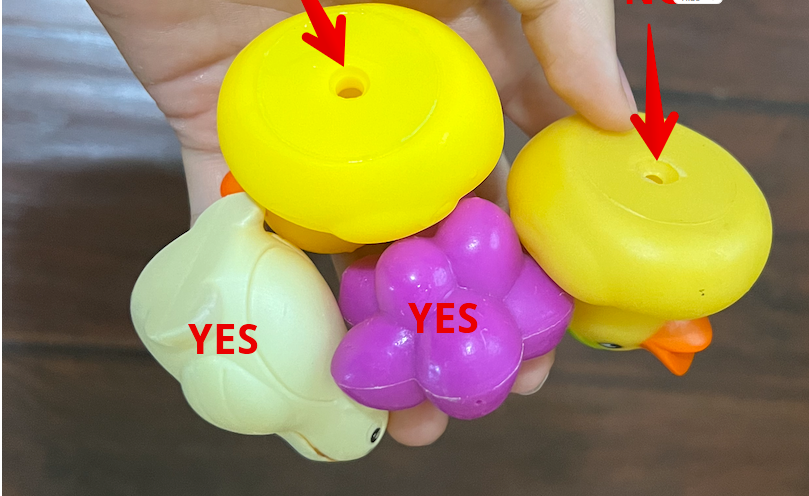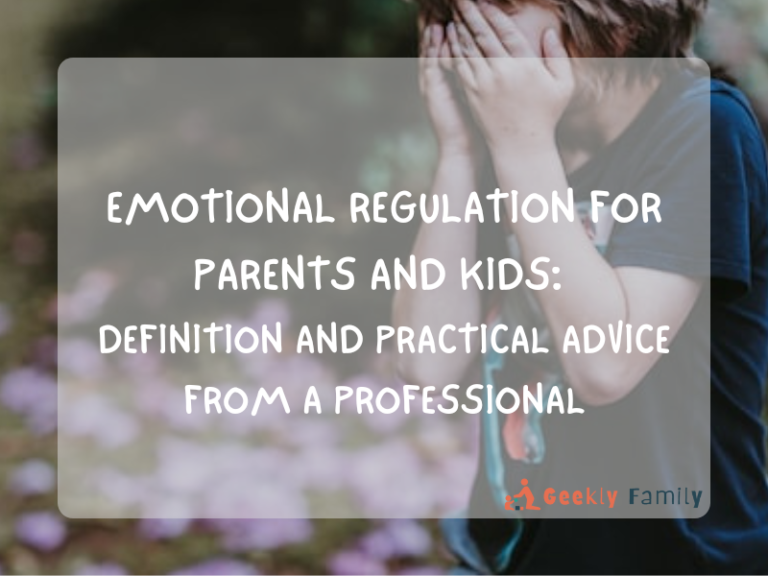How to Clean Bath Toys – 5 Easy Toy-Cleaning Solutions
Remember those rubber duckies and squirting toys all of us had when we were kids? Unfortunately they are still being produced and popular these days, while being a major mold builder. Keep reading to learn all the ways on how to clean bath toys.

Table of Contents
Why Is It Important To Clean Bath Toys?
Cleaning bath toys is as important as cleaning a baby’s bathtub. Wet toys, and particularly bath toys are the perfect environment for bacteria and mold to flourish. As studies have found, there is a high number of bacteria in these seemingly innocent playthings. This bacteria is often linked to health issues such as allergies and respiratory difficulties.
However, these toys are also the favorite playmates of our children during baths. For this reason, they should be cleaned regularly in order to safeguard kids’ health from bacteria which can cause illness.
| SURPRISING FACT: Even though there are a lot of bacteria on bath toys, they aren’t the dirtiest children’s toys. The dirtiest item is actually the kid’s stroller. |
How to Clean Bath Toys: 5 Methods
Before you get down to cleaning you should choose which method you are going to use. Here are some we tried.
1. Vinegar Solution
Cleaning bath toys with vinegar is a proven method. Just mix 1 gallon of water and ½ cup of distilled white vinegar. You will also need a toothbrush to brush the toys and a dry towel to leave the wet toys on it to dry.
2. Boiling Water
Boiling water kills bacteria such as salmonella and even some viruses such as hepatitis A. Additionally, it’s an easy way to sterilize bath toys. To clean the mold in bath toys with boiling water you’ll need a pot of boiling water then soak the bath toys in it for a few minutes. Be sure to position the toys so that the hole is facing downwards to allow excess water to drain. After boiling, air the bath toys in an airing cupboard or somewhere else where they will dry out quickly.
3. Dishwasher
To wash bath toys, put them in a dishwasher-safe bag and run them through a cycle on the top shelf of the dishwasher. This will ensure that they come out clean and disinfected. You can also wash bath toys in the washing machine, though it’s best to test one toy first to make sure there are no allergies or sensitivities. Put the toys in a mesh bag or pillowcase and wash them on a normal cycle with detergent. If the toys are very dirty, you can add an antibacterial laundry additive. Just be sure not to use bleach, as it can damage the toys.
4. Hydrogen Peroxide
Hydrogen peroxide is yet another quick and effective cleaner. You can soak the toys in a 50/50 solution of water and hydrogen peroxide for an hour or so, before rinsing and wiping dry.
5. Breathable Storage for Your Freshly Cleaned Bath Toys
Bath toys can be kept clean and dry by using mesh bags. It’s also a good idea to invest in a breathable storage space for your toys.
Cleaning Bath Toys: Before and After
Whichever method you choose, here is what you need to do before and after cleaning the toys.
Before: Gather Your Supplies
It is best to have your supplies ready so that you don’t run around. Regardless of which solution you go for, always have a dry towel at hand to put the toys on it to dry.
Tip: To prevent making a wet mess, we advise you to clean the toys in your bathroom.
After: Dry the Toys Completely
Once you are done cleaning:
- Squeeze out any water stuck inside the toys.
- Leave the toys somewhere that’s well ventilated to air dry.
How to Prevent Mold and Bacteria on Bath Toys?
You cannot totally eliminate mold and bacteria for getting on your child’s toys unless you thoroughly clean the toys after each bath. However, you can reduce them by:
Rinsing the Toys With Clean Water After Use
After every bath, you should squeeze out any water stuck inside the toys and rinse them with soapy water. If not squeezed, water may stay hence mold can grow inside bath toys. Finally, after following proper rinsing, leave the toys in a ventilated room to air dry. If your child is immunocompromised, you may wish to wipe the toys with disinfectant wipes.
Store the Toys in a Breathable Storage Container
When bath toys are stored in a non-breathable container, such as a plastic bag, they are more likely to develop mold. This is because the water that is left on the toys after bathing will not be able to evaporate, creating the perfect environment for mold to grow.
Mesh bags are a great way to store bath toys because they allow air to circulate, which helps the toys dry out quickly. This prevents mold from growing on the toys and keeps them clean and safe to use.
It’s also important to throw away any bath toys that have signs of black mold. This type of mold can be harmful if ingested, so it’s best to err on the side of caution and get rid of any moldy toys immediately.
Consider Avoiding Squirting Toys Altogether
Perhaps the best way to clean bath toys is to avoid squirting toys altogether. Squirting toys can be difficult to clean and may harbor more bacteria than other types of bath toys. Additionally, they are used in the bathroom where there is a lot of humidity and humidity can cause toys to rot.
Buy Bath Toys That Are Less Likely to Mold
As we mentioned there are no toys that won’t get mold if used and kept in humid places. But plastic toys without holes aren’t as prone to mold as the rubber toys.

Conclusion
Bath toys are the favorite playthings of children but they are also the perfect ground for bacteria and mold to flourish. Therefore, it is essential that you clean them regularly by using any of the methods we listed. Whether you are cleaning the bath toys with vinegar, boiling water, or hydrogen peroxide, make sure you air dry the toys after washing and store them appropriately in an air-ventilated storage.
FAQs
1. What are the best ways to clean bath toys?
To clean bath toys, you can either heat them in hot water to sterilize them, or use a biodegradable dishwashing detergent in the dishwasher. Soak the toys in water for 15 minutes first, then use a sponge or cloth to clean them. You can also machine wash the toys on your regular cycle, but be sure to put them in a mesh bag or pillowcase first to prevent damage. Let the toys dry before storing them away, and don’t use bleach as it will create foam and flood your house. If the toy is especially grimy, you can add an antibacterial additive to your laundry.
2. What are the best products to use to clean bath toys?
The best products to use are those that can safely and effectively remove dirt and debris. A toothbrush can be used to remove accumulated dirt, and the toys can then be rinsed with fresh water. If floating toys are not floating properly, equal parts water and 3% hydrogen peroxide can be added to the bathtub. Commercial products such as Milton Sterilizing Fluid can also be used to clean bath toys. To avoid mold, holes on the toys should be sealed with hot glue before they are packed away.
3. How often should you clean bath toys?
It is recommended that bath toys be washed roughly once a week, but it is important to rinse and dry them thoroughly after every use. Foam and rubber bath toys will wear over time, so it is recommended to clean them regularly. It is advisable to replace bath toys every 3-6 months. If the bath toys are discolored or smelly, it is time to replace them.
4. What are the consequences of not cleaning bath toys?
Bath toys can harbor bacteria and mold, which can lead to health problems such as allergies and respiratory infections.
5. How to clean bath toys without chemicals?
Bath toys can get pretty dirty and germy, so it’s important to clean them on a regular basis. One way to do this is to boil them. Boiling water will kill any bacteria or germs on the toys, and it also prevents mold from growing. Boil your bath toys weekly for best results.
6. How often should I replace bath toys?
Bath toys should be replaced every 3 months to avoid mold. They should be cleaned and dried after every use.




![What to Wear to a Kid’s Birthday Party? [Ideas and Things to Consider]](https://geekly.family/wp-content/uploads/2022/11/HOW-TO-CLEAN-BATH-TOYS-1-1-768x576.png)
![When Do Kids Learn Multiplication and Division [And How to Help Them]](https://geekly.family/wp-content/uploads/2022/11/HOW-TO-CLEAN-BATH-TOYS-2-2-768x576.png)
